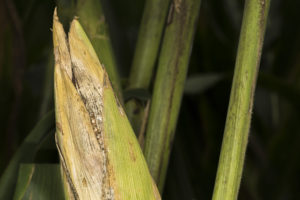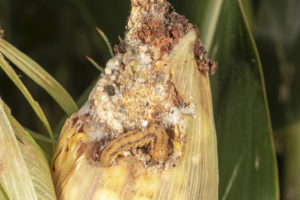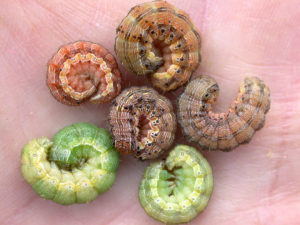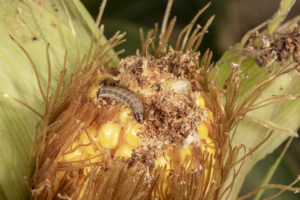Samples to the Purdue Plant and Pest Diagnostic Lab, emailed pictures, and field visit observations confirm that corn ear caterpillars are still active in occasional fields throughout the state. With late, and staggered, planting of corn fields and the various hybrid maturities, some fields have become a “trap crop” for late-flying, egg laying moths. Western bean cutworm larvae are still being found in corn, mostly on sandy soils, in northern counties. Whereas, corn earworm and fall armyworm, are still munching away in specific fields (or areas of a field) throughout the state.
Often, infested/damaged ears, from milk to dent corn stage, are those with missing silks. You may notice this first on the end rows. Further investigation into the fields may reveal hot-spots, often related to differing soil types or poor drainage, where corn maturity is out-of-sync with the rest of the field. Pulling back the husks will reveal worms and/or ear tip feeding. Earworm and fall armyworm tend to damage near the ear tip, whereas western bean cutworm wander and feed throughout the ear. No matter the species, you can have multiple worms per ear.
The majority of Bt-traited corn (e.g., VT Double Pro, AcreMax), that claims control of these ear feeders, generally aren’t put to the test as they are this season. Currently, there is a known resistant population of corn earworm to VT Double Pro in North Carolina sweet corn. It is not out of the realm of possibility that some of those moths have been pushed here from previous year’s tropical storms. As we found out the last couple of years in the Midwest, western bean cutworm and fall armyworm population are resistant to Bt-traits commonly used in Indiana. Personally, I think the industry would be better served if suppression were used on labeling/marketing for all ear feeders. The only exception may be those hybrids expressing the Vip3A protein, those still seem to be controlling these pests.








